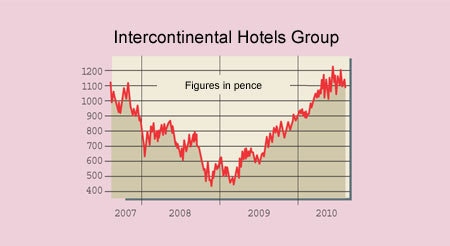
To a holidaymaker, tourism means beaches and cocktails. But there’s a lot more to it than that.
Tourism accounts for 5% of global GDP, contributes a massive $1trn to the world economy and is the world’s fourth most commonly exported product, after fuels, chemicals and cars.
It’s also a very fast growing sector. Take, as an example, the number of tourists arriving in other countries on holiday – a good measure of the movement in the sector. Back in 1950, 25 million people around the world took a foreign trip. Today that number is more like one billion. And according to the UN World Tourism Organisation (UNWTO) it should hit 1.6 billion in 2020.
Obviously, the vast majority of this growth can be put down to rising standards of living, particularly in emerging markets. Chinese and Russian nationals are now among the top-ten international tourist spenders. In 2008, the last year for which we have figures, they increased their holiday spending by 21% and 12% respectively. Then there are the Middle East and Africa where outbound tourist numbers rose by 16% and 5%, respectively, in the same year.
But it isn’t all about emerging markets. Traditional tourists – from Europe, North America and Japan – continue to travel too, despite the fact that it would be hard to argue their living standards are rising at speed. Recent UNWTO figures show that, notwithstanding the weak nature of the recovery and closure of European airspace due to volcanic ash, the number of travellers from developed nations appeared to be at least stable in the first quarter of 2010. At the same time eight out of ten of the highest-spending tourists still come from developed nations.
The average tourist is also going a good deal further than even 15 years ago. In 1995 only 20% of tourists arrived from long-haul destinations. By 2008 this had risen to 25%. This trend is pushing up aviation’s share of international tourism transport, which now stands at 52%. And, due to the emergence of low-cost carriers in developing markets such as those across Latin America, numbers are still rising. But where to invest? Consider tourism group TUI (LSE:TT).
Special FREE report from MoneyWeek magazine: Don’t be fooled – house prices will fall again!
- Why UK property prices are set to collapse by 30%
- When it will be time to get back in and buy up dirt cheap property
It is tempting in that it has a mix of operations in mature and emerging markets, but its success is confined to the leisure market – that is, people taking holidays or short breaks. Purer transport or accommodation plays, on the other hand, can benefit from every type of international visitor – be they holidaymakers, business travellers or dental tourists.
So how can investors best take advantage of these long-term trends? You might think that recent growth would make the aviation industry a major winner. But it is worth remembering that most good fund managers will tell you the first thing their boss ever told them was never, never ever to invest in an airline. That’s thanks to a cocktail of high capital and fixed costs, endless regulatory interference and uncertain fuel costs. Chuck in the fall in corporate travel during recessions and it’s an almost guaranteed way to lose money.
A slightly better way in might be via a tourist investment fund. But most of these are more property companies specialising in hotels than real tourism plays. Better then to find a hotel group that does not directly own much property, but which has, instead, built a large international presence via franchising deals. See the box below for one of the best bets in that sector.
The best bet in the sector
The Intercontinental Hotels Group (NYSE:IHG), owner of the Holiday Inn and Crowne Plaza brands among others, is the largest hotel firm in the world. Its business model is built on franchising and managing hotels rather than owning them. Indeed, it only owns 1% of its portfolio. That means it has very little exposure to the world’s wobbling property prices and little need to raise fresh capital. The group also enjoys a good head start in emerging markets. It was the first international hotel company to open in China, in 1984, and now has more hotels in that country than any of its peers. Tourist numbers are being driven by an aspiring middle class.
Indeed, 90% of visitors to IHG’s mid-level Holiday Inn hotels there are Chinese. It also owns various exclusive brands that cater for wealthier Chinese consumers and foreigners. And with the number of holidaying visitors to China expected to increase tenfold over the next decade, IHG’s business model should allow the firm to scale up quickly without tapping outside investors. Results out this week showed that IHG’s revenue and operating profit were up year-on-year. As a result it upped its dividend.
The shares yield 2.4% and the p/e ratio of 16.8 for 2011 compares well to rivals such as Sol Melia (SOL:SM) on 20.2 and Marriot International (NYSE:MAR) on 24.5. IHG is the one to buy.
• This article was originally published in MoneyWeek magazine issue number 499 on 13 August 2010, and was available exclusively to magazine subscribers. To read more articles like this, ensure you don’t miss a thing, and get instant access to all our premium content, subscribe to MoneyWeek magazine now and get your first three issues free.